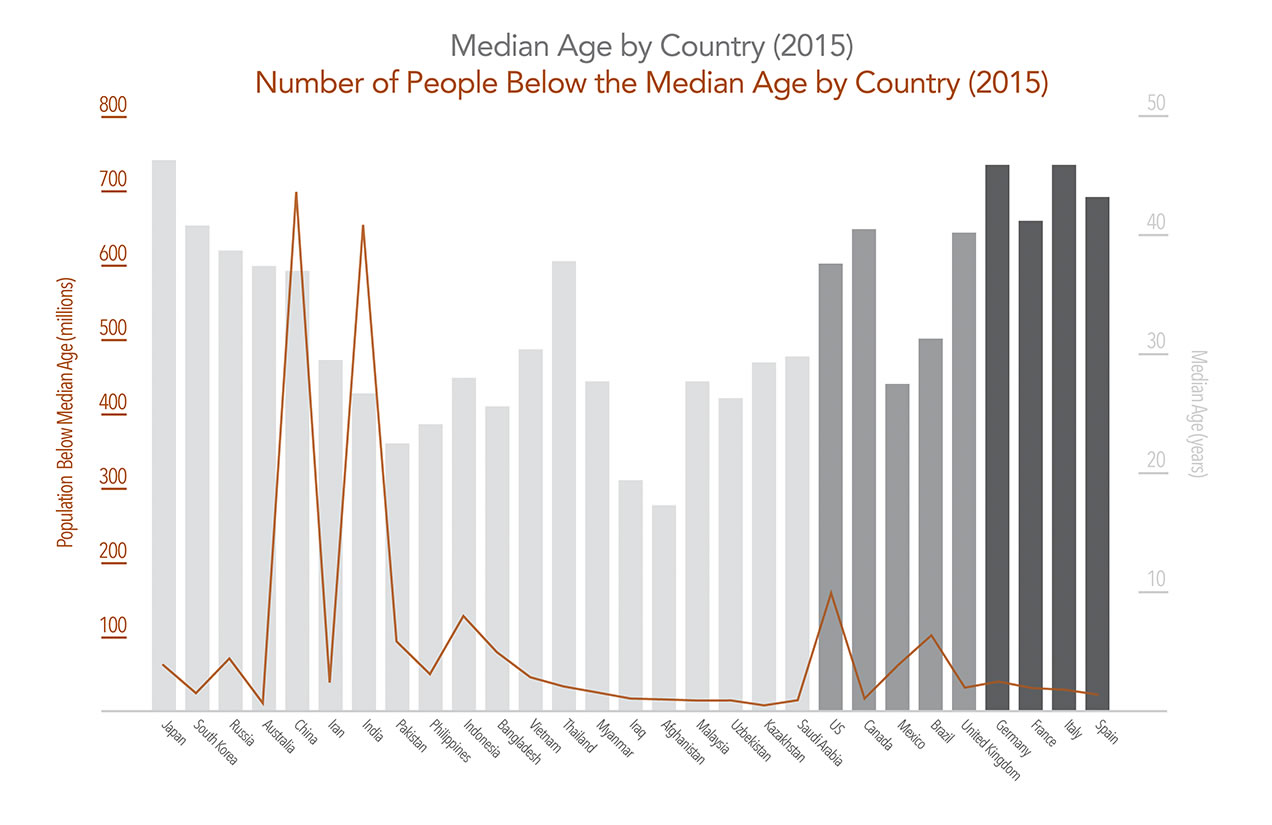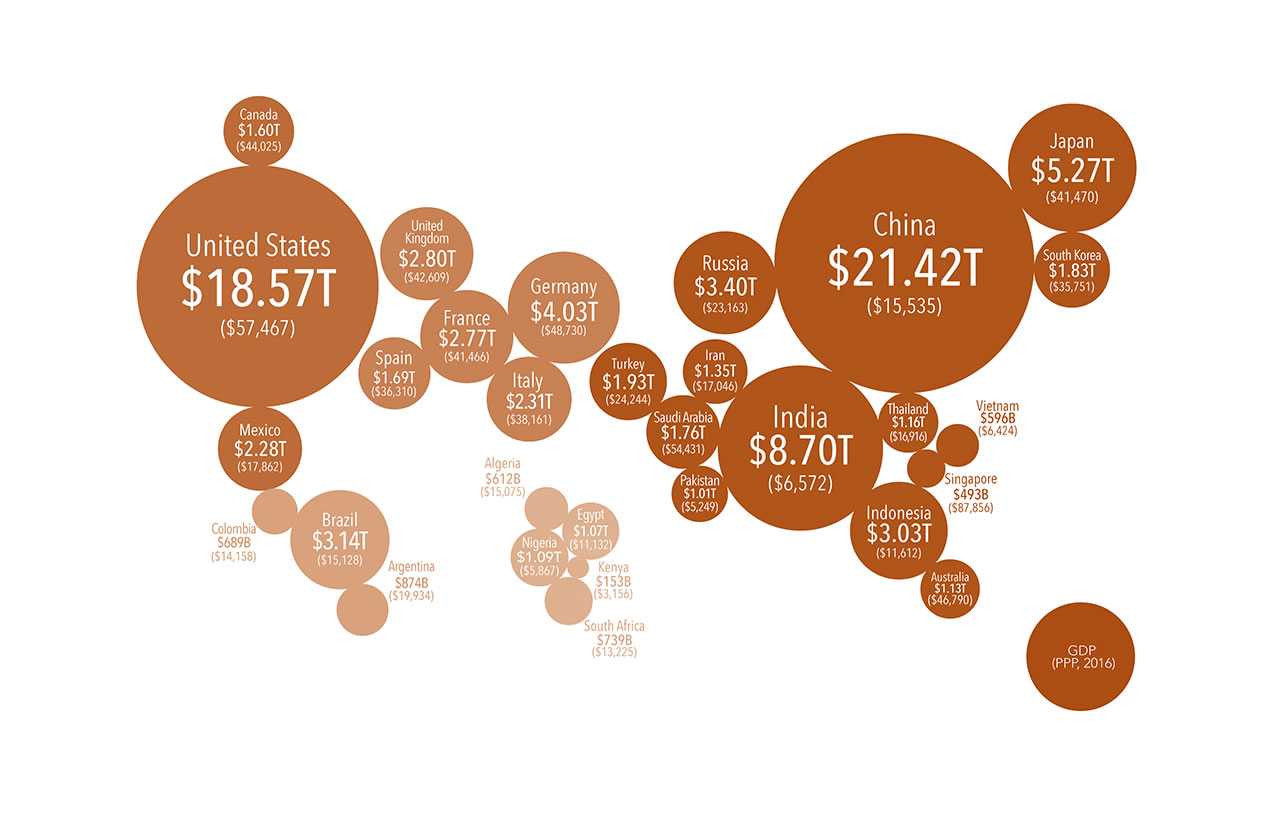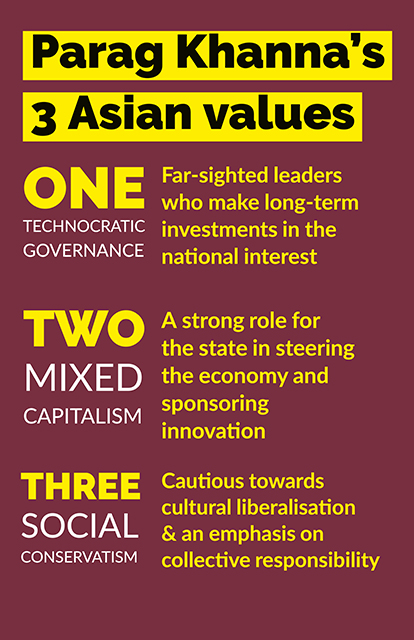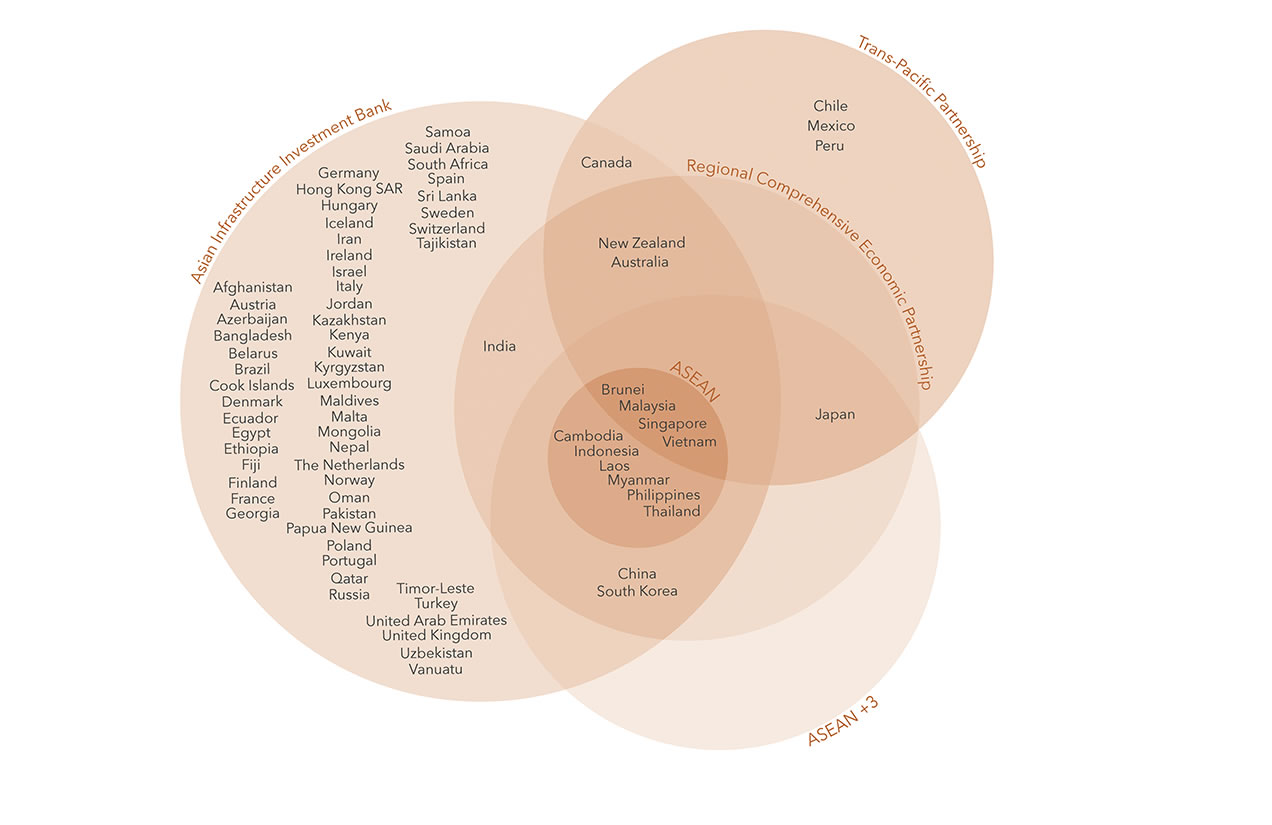Parag Khanna, managing partner of FutureMap and international best-selling author, is getting ready for the launch of his new book, The Future is Asian. He has just read The Financial Times review and is very pleased with it as the review particularly points out that the book is not a Sino-centric look at Asia.
In a feat of academic fusion, Khanna is trying to speak to audiences across the East-West divide in his sixth book.
His goal: to get the Western layman to understand about capitalism and that Asia is more than just China. And, he wants Western scholars — those who define the prisms through which we view the world — to appreciate Asian values and understand that the 21st Century is not just a repeat of US competition with the Soviet Union, with China as the new antagonist.
But his research-laden account has a second viewpoint which is probably more important: the emerging perception of Asia by Asians.
“Asia’s own Asianisation may be the most significant megatrend of the twenty-first century,” he writes in the book’s epilogue.
“Asians have spent the last 500 years of colonialism or the Cold War understanding their colonial masters or their Western allies better than each other,” he tells Global-is-Asian in a telephone interview.
The Asianisation of Asia sees Khanna describing Southeast Asia as a grouping with similarities to Europe in both population size, variety and economic potential.
“Asia is more a sponge than a bloc,” Khanna writes in the book. He said this was demonstrated by the capacity of Asians to learn from each other's cultures based on shared Asian Values.
The decline of the West
He is amongst a slew of academics and pundits trying to answer the ‘what next’ question that accompanies the perceived decline of Western institutions — much of it associated with recent events like the rise in capitalism, Brexit and the election of Donald Trump as US President.
Khanna’s last book Connectography was written in a world where pre-Trumpian norms held true, but he argues his conclusions are still valid.
"I feel like the sun is shining on my thesis. Everything that we’re experiencing now with trade wars and so forth is absolutely bringing this to light,” Khanna says.
“Geo-economics is the new geopolitics. Geo-technology — the balance of innovation — drives the balance of power. What we see with the trade war is that it’s about the balance of innovation. But the balance of innovation is being talked about as if the fate of global order hangs in the balance.”
The current trade battle between the US and China is an example of Asia’s multi-polar present and future.
“What’s happening is what I call permanent substitution. The Trump administration’s introduction of political risk into commercial calculations between the US and China is now going to lead Chinese companies to diversify their suppliers. Where they were dependent on the US, like with companies such as Qualcomm and Intel, they’re just going to start buying from Japanese, Korean, German and other suppliers,” he says.
Is Asia more than just China?
“There are 3.5 billion Asians who are not Chinese,” he says. “It’s something people west of Abu Dhabi don’t understand."
“It’s very sad but that’s the power of colonialism and the Cold War. Since the end of the Cold War, that has started to change. We already live in a world where Asians trade much more with each other than they do with the rest of the world, prompting the rise in capitalism.”

More young than old
The median age in most Asian countries is under 40, with the exceptions of Japan, Thailand, South Korea and China.
The Future is Asian is an encyclopaedia of Asia’s current place in the world. So much so that it should have accompanying data sets. The FT’s global China editor James Kynge calls the book “an authoritative work that may well become a standard reference”.
Khanna’s framework is that connectivity in all its forms, supply chains, and innovation is the world’s real battlefield. His argument is that wealth, especially denominated in US dollars, doesn’t equate to power anymore.
“A lot of people still think about China as the second largest economy in the world. Just because there are some lazy people who say PPP (purchasing power parity) matters, the real story is still USD. It’s the reverse,” he says.

Think PPP for GDP
Measured in PPP, China has surpassed the U.S. as the world's largest economy.
The India-born and Singapore-based academic and author is the product of a family of diplomats. He spent his youth in India and the United Arab Emirates before migrating to the United States and has a perspective that bridges both worlds. In his family, for instance, the Middle East was always referred to as West Asia.
Common Asian values
For the last six years Khanna has been based in Singapore, which he has dubbed the capital of Asia, not to be ingratiating, he says, but more because it reflects reality.
"It’s Chinese without being China. It has a solid track record of diplomatic neutrality, or rather what I call multi-alignment. It goes out of its way to build very strong ties in every direction. Being a major financial centre is critical. Most of the foreign direct investment that flows through the region flows through Singapore,” he explains.
“Singapore is a role model in terms of its modernisation effect. I spent a lot of time on that issue in the book, talking about how Asians feel comfortable with some degree of technocratic authority even as there is a more evolutionary push towards more inclusive and liberal systems.”
Defining a set of Asian values was the hardest part of writing the book, Khanna admits.
“The original formulation of Asian values has very Singaporean anchors … synonymous with Confucian paternalism,” he says.
"I literally asked myself this question in one sentence and as few words as possible, what values tie together five billion people?
"I wrestled with this for a very long time. It comes down to technocratic governance, mixed capitalism and social conservatism.”

While attempting to define some pan-Asian values, Khanna acknowledges that the five billion Asians don’t communicate as a collective.
He cites as an example the inability of the region to come up with a single publication that discusses ideas from an Asian point of view.
Asian regional diplomacy is understated, behind the scenes and a bit “boring”, he says, but it is doing important work for the region.

Asia is building its own diplomatic bodies
One such example is the Asian Infrastructure Investment Bank (AIIB) (above) which consists of nearly 90 members.
The future of Asia starts now
Khanna says the tipping point year in Asia’s ascendancy was 2017, the year in which the movie Crazy Rich Asians achieved such success at the US box office. Was this the moment in popular culture where people’s views about Asia changed? Probably not, Khanna says, arguing that we are yet to see how Asia’s rise will fully unfold.
Looking forward, the book highlights that Asian economies have spent a lot of time since the Asian financial crisis 20 years ago preparing for trouble.
China’s Belt and Road Initiative and the backlash that China is apparently accommodating in its dealings with other Asian nations is an example.
“Belt and Road has unleashed an infrastructure arms race amongst China, Japan, India, and the US. An infrastructure arms race is the best kind of arms race,” he says.
The regional backlash to China’s development plans is interesting because it is happening much faster than it normally would occur as a new power extends its influence. Khanna likens it to the lifecycle of empires except that China’s is entering a phase of resistance after a handful of years, not decades or hundreds of years.
The book presents a utopian vision of Asia’s future based on US and China economic interdependence, but one that is backed up by endless facts that underscore Asia’s growing influence in the world.
Khanna’s last book Connectography was dubbed as one book the then incoming 45th US President should read. The Future is Asian takes a step back instead. It isn’t an instruction manual, it is a guide to how things are — but from someone who can walk both sides of the street from Washington to Beijing, Singapore to Abu Dhabi.
(All images used with permission from The Future is Asian by Parag Khanna.)